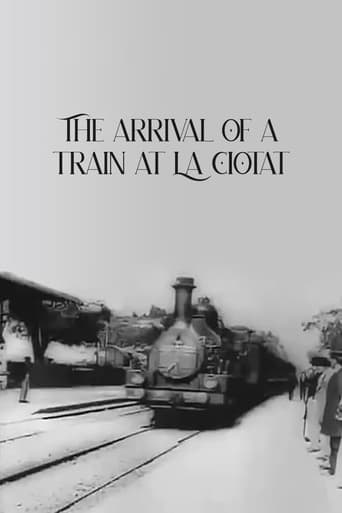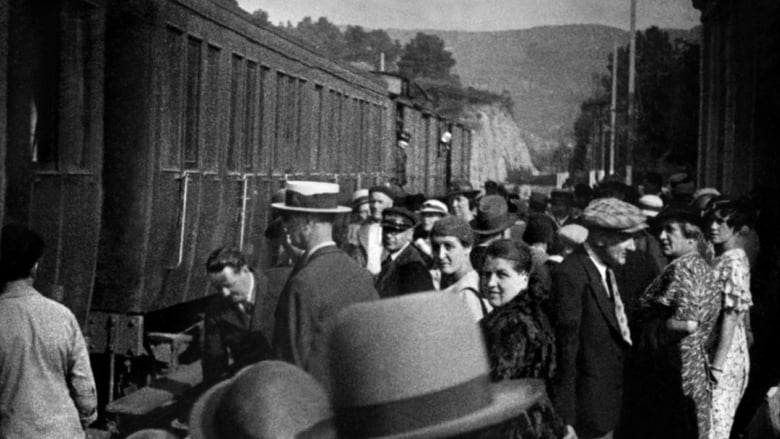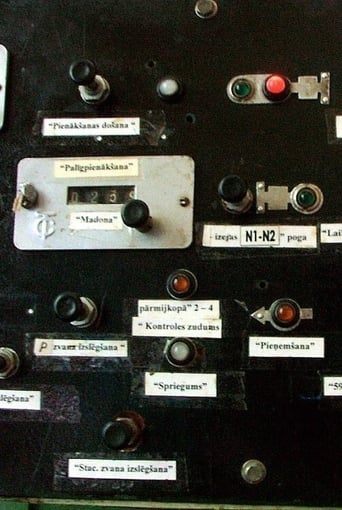

The Arrival of a Train at La Ciotat (1897)
Likely in June 1897, a group of people are standing along the platform of a railway station in La Ciotat, waiting for a train. One is seen coming, at some distance, and eventually stops at the platform. Doors of the railway-cars open and attendants help passengers off and on. Popular legend has it that, when this film was shown, the first-night audience fled the café in terror, fearing being run over by the "approaching" train. This legend has since been identified as promotional embellishment, though there is evidence to suggest that people were astounded at the capabilities of the Lumières' cinématographe.
Watch Trailer
Cast


Similar titles
Reviews
A train arrives at a train station. That is the entire short film here. But back then it must have seemed like magic to see actual moving pictures on a screen so I guess they didn't use to need more than that ha ha.
So this is one of the first films ever created. It is a cultural icon and seems to have stuck in the minds of cinema goers since it was screened. Surrounding it is the myth that the first viewers screamed as the train went past, afraid to be run over. But with all that in mind it is literally a train. At a station. So reviewing on the quality of the film alone and its content, I'm giving it a 6, which is really quite generous. I think this film is a must watch for any cinema buff, but you know it's only a minute long. Now I'm just filling in space so IMDb lets me post it. To be honest, I just wrote this review to get the little tick on my profile because it was bugging me.
A train arrives at a station. And changes everything.There isn't a lot to really say about L'arrivée d'un train a La Ciotat as a film itself. It's under a minute and shows a train pull up at a busy station. But what it signifies is another thing altogether. When we see that train come closer and closer until it stops in the station, on a surface level we watch a train arrive but it actuality what we are really witnessing is cinema arrive. This short film may not be the earliest movie but it is the first iconic image of the moving picture age.Auguste and Louis Lumière weren't really artists. Their early films don't stand up to the highly imaginative work of George Méliès for example. But they still remain enormously important cinema giants. Not for the content of their films but for the fact that they kicked things off in the first place and produced the first iconic moment in cinema history. And for this reason L'arrivée d'un train a La Ciotat will always be remembered. Everyone who has a love of cinema should really take a minute of their time to pay homage to the first moment in an amazing journey.
I watched this film on a DVD that was rammed with short films from the period. I didn't watch all of them as the main problem with these type of things that their value is more in their historical novelty value rather than entertainment. So to watch them you do need to be put in the correct context so that you can keep this in mind and not watch it with modern eyes. With the Primitives & Pioneers DVD collection though you get nothing to help you out, literally the films are played one after the other (the main menu option is "play all") for several hours. With this it is hard to understand their relevance and as an educational tool it falls down as it leaves the viewer to fend for themselves, which I'm sure is fine for some viewers but certainly not the majority. What it means is that the DVD saves you searching the web for the films individually by putting them all in one place but that's about it.Anyway onto this film which is the continuation of the understandable Lumière standard of standing a camera pointing at an event and then recording it happen. In this case a train pulls into a station and people get out. In terms of action it is not that interesting but in regards history of cinema it does offer something at least. It struck me that the other films from Lumiere I had seen to this point had point head on at the action whereas this one was set so that we had a wider view and that things played out across the screen towards the viewer. Also amusing is that some people become awkward when they notice the camera whereas other just bluster in front of it unaware.The usual fare then that produces little of interest in terms of actual content but has more of interest when viewed in its historical and cultural context.






